Kosovo hadn’t been on my list of possible destinations when I decided to tour the ex-Yugoslavian countries this summer. I’d been repeatedly advised that Kosovo was dangerous, so when, on a whim, I decided to visit the capital city of Pristina on my way to Macedonia, I admit to being a little anxious.
I had been told that crossing into Kosovo from Serbia would present no problem, but that I would have trouble getting back into Serbia with a Kosovo stamp in my passport. At the very least, Serbian border control officers would strike through the Kosovo stamp, but re-entry into Serbia is at the discretion of the individual officer and there have been instances of people being turned back. Since I had no plans to return to Serbia on this go-around, I forged ahead.
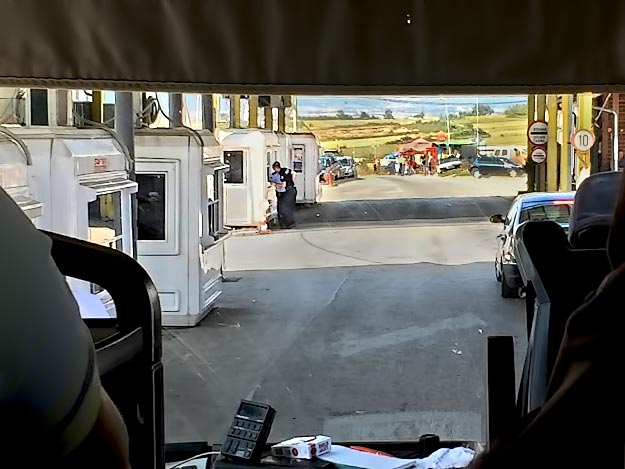
Upon arrival at the border, I dutifully turned my passport over to the bus driver’s assistant. The “border” in this case was a row portable guard houses that have been plopped down in the middle of the road. Though it is forbidden to take photos of border crossings, I couldn’t help myself; I aimed my iPhone down the aisle, hoping no one would notice. And then I waited, nervously. I needn’t have worried. Seeing I was American, the Kosovan border guards placed no entry stamp in my passport (nor did they stamp me out when I left). I later learned this is a courtesy provided to Americans so as not to cause them trouble should they wish to return to Serbia.

Considering that the country emerged from war just 16 years ago, I had expected to find the same lack of infrastructure and economic malaise that was so prevalent in Serbia. A minute after crossing the border, however, it was obvious that the situation is much different in Kosovo. Factories, including two big power plants, lined the highway, and in Pristina, cranes hung over high-rise construction sites like a flock of gigantic one-legged birds. Cars were newer, houses were of good construction, and unlike the potholed streets in Serbia, the roads in Kosovo were in great condition.
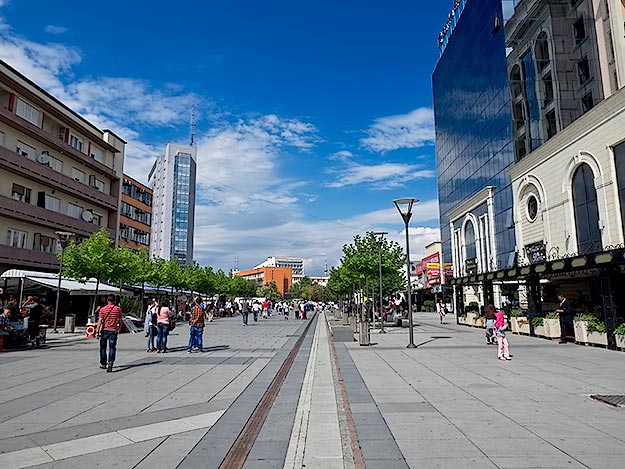
Some will challenge my use of the word “country” to describe Kosovo. To date, only 108 of the 193 United Nations (UN) member states, including the United States, have recognized Kosovo as an independent country. Serbia has refused, insisting that Kosovo is still part of Serbia. Staunch allies of Serbia have also withheld recognition; Russia, for example, has said they consider Kosovo’s declaration of independence to be illegal.

Kosovo was for many years an autonomous province within Serbia, one of the six socialist republics that made up the Kingdom of Yugoslavia. Unlike Serbia, whose citizens are Serbian-speaking Orthodox Christians, the majority of Kosovars were overwhelmingly Albanian Moslems. Between 1912 and 1941, the Serbian government pursued a large-scale Serbian recolonization of Kosovo. By the late 1950’s, Serbs were largely controlling the government and security forces, held all the good jobs, and had denied Albanians’ right to receive education in their own language. When Yugoslavia began allowing the Kosovo region some autonomy in 1966, Serbs were gradually ousted, leaving a 90% Albanian majority in the region.
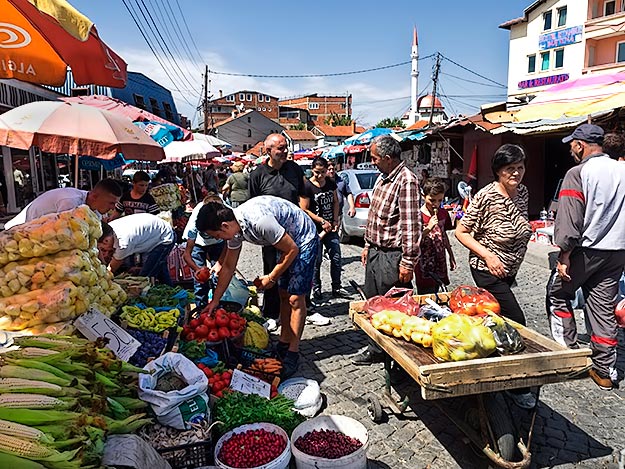
After the former Yugoslavia broke up, Kosovo continued to be controlled by Serbia and Montenegro. In September 1992, members of the Kosovo Assembly declared a sovereign and independent state, but Serbia refused to recognize the independent status. War broke out in 1998, with the Kosovo Liberation Army fighting the Serbs. The conflict was finally ended in 1999, when NATO intervened and forced the Serbs to withdraw. Though the situation remains unresolved, relations have begun to normalize, as the European Union insists that the Kosovo issue be resolved before they will consider either country for EU membership. These days the war is one of diplomacy, with NATO KFOR forces providing security for the few Serb enclaves that remain in Kosovo.
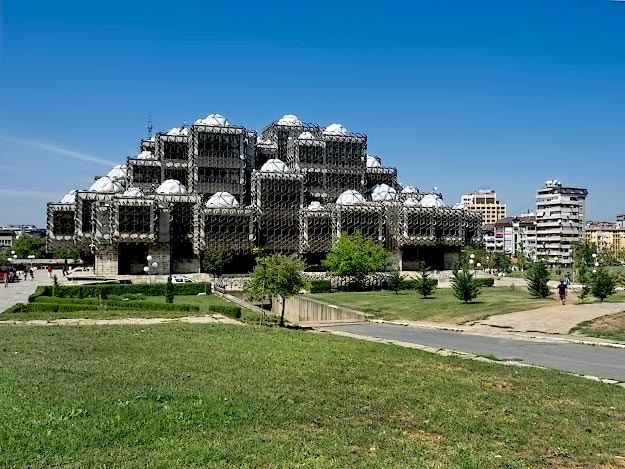
Because the United States was more than a little instrumental in ending the war, Kosovars love Americans. Out of respect for our support, the American flag flies in front of many of their government buildings. Streets are named after Presidents Clinton and George W. Bush, and a statue of Bill Clinton stands at the end of the broad boulevard named for him. Every last person I met who learned I was from America thanked me for our part in ending the conflict.
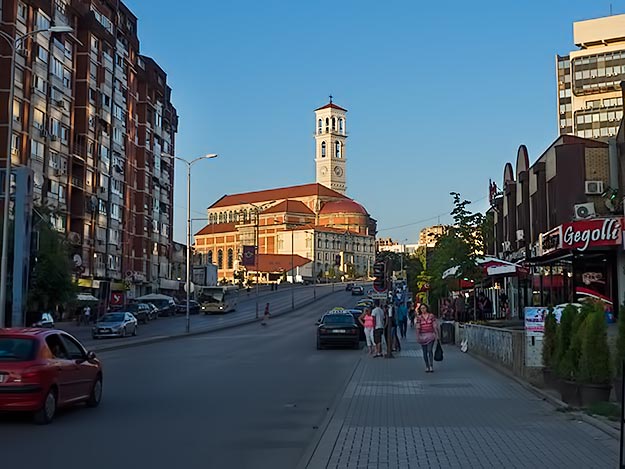
Not only are Pristina and Kosovo safe destinations, I found much to recommend the capital city. The food is excellent (kudos to 21 Restaurant for the selection of vegetarian dishes on their menu), the countryside offers many beautiful day trips, and prices are exceptionally cheap. My most expensive dinner was $11, and I bought a bag of fruit (four plums, two peaches, two bunches of grapes, a tomato, and a banana) for less than a dollar! Almost every person I met spoke English, and everyone was incredibly friendly. The marble-paved, pedestrianized Mother Teresa Boulevard, truly the heart of Pristina, is lined with sidewalk cafes where guests can linger for hours over an espresso. And linger I did; to my delight I found that Kosovo has a well-deserved reputation for having the best coffee in Europe.
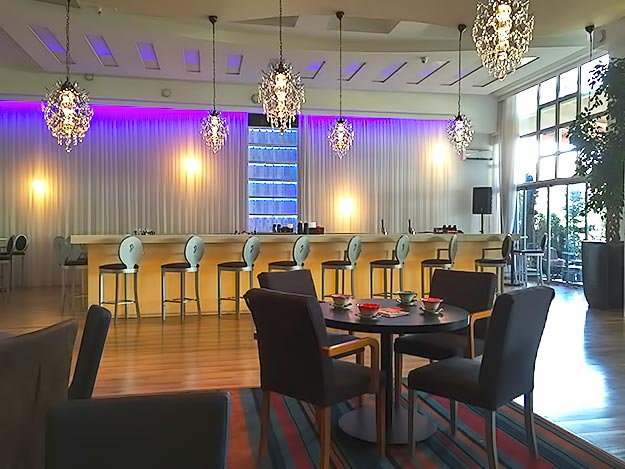
In an era where Americans must count their days in Europe’s Schengen Zone to make sure they don’t stay more than 90 days out of every 180 days in the 27 Schengen countries, Kosovo allows Americans to enter without a visa and stay for up to 90 days. So ignore the rumors of danger and just go.


Why problem for serbian border? example i go to in kosovo from skopje , i be in problem or not.
Great pictures and great description. Wcb again. From Kosovo with love . !
Glad you liked it Semi and welcome aboard!
Thank you for visiting my country and writing this nice article. This is what makes you different from other travel writers, you visit countries that others feel are not “worth” visiting or writing about.
The only correction I have is that we are Kosovars not Kosovans but you’re not the only one. Most of internationals I used to work with thought it was Kosovan.
Thanks again.
Teuta
Hi Teuta! Thanks so much for the correction – sorry about that. Just made the changes.
This is a great post, Barb! The information is new to me. Like you, I have a desire to see all the countries of the former Yugoslavia. However, Kosovo would probably not be on my list had I not read this. I\’ll keep this post and hope to visit this interesting place one day soon. Thanks.
Libbie
Hi Libbie: I hope you get to do a tour of the ex-Yugoslavia countries. It was one of the most interesting trips I have ever done. The history is convoluted and will have your head spinning, but I came away with a much better understanding that I could have hoped for.
Great post i really enjoy reading your blog because is different.. and you are right for me i get surprise when i travel in 2011 to israel everybody told is dangerous but for me it was the place with more peace and security
Hi Izy: Thanks so much for continuing to be a loyal reader. I sigh every time I hear another person say a place is a dangerous travel destination. Certainly, there are some places in the world that I would not go at this point, but most places are safer than in the U.S.